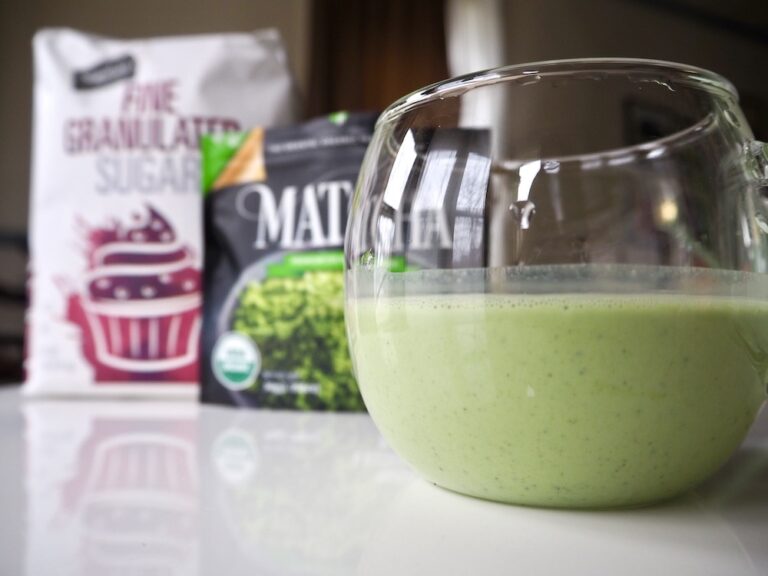Matcha latte, a traditional Japanese drink, has gained popularity worldwide for its unique flavor and health benefits. Making a matcha latte at home can be a delightful experience, allowing you to enjoy this creamy and aromatic beverage any time you crave it. This article will guide you through understanding matcha, crafting the perfect matcha latte recipe, customizing your drink to your taste, mastering advanced techniques, and preserving your latte for future enjoyment.
Key Takeaways
- Matcha, the vibrant green tea powder, is the heart of a matcha latte and differs from regular green tea in its production and flavor profile.
- Creating the perfect matcha latte at home involves simple ingredients and can be tailored to personal preferences with various sweeteners and milk options.
- Advanced matcha latte techniques, such as making a dirty iced matcha latte or using different tools for frothing, can elevate the homemade latte experience.
- Storing matcha powder correctly and understanding the dos and don’ts of making lattes in bulk are essential for preserving the quality and flavor of your drink.
- Matcha lattes are versatile and can be enjoyed hot or cold, making them a perfect beverage for any time of day or season.
Understanding Matcha: The Key Ingredient
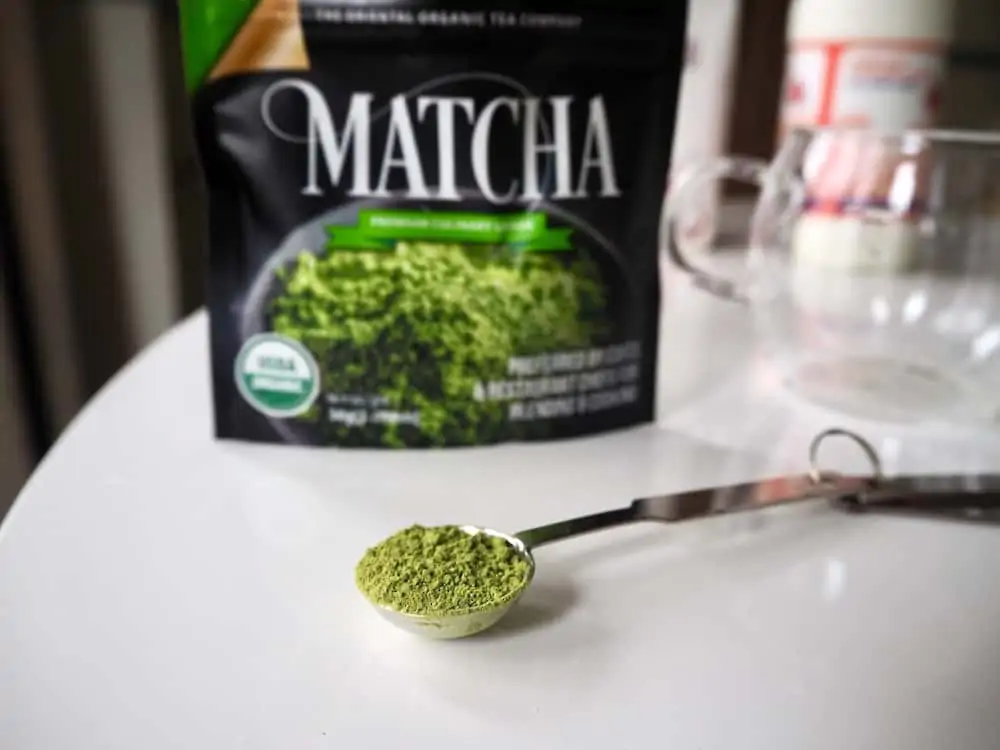
What is Matcha and How is it Different from Green Tea?
Matcha is a unique form of green tea, originating from a tradition that dates back to the 12th century. Unlike regular green tea leaves that are infused in water and then removed, matcha is made from green tea leaves that are ground into a fine powder and fully dissolved in water, providing a more concentrated tea experience. Matcha is more robust and earthy in flavor, compared to the milder and more subtle taste of traditional green tea.
When selecting matcha, it’s crucial to choose a high-quality powder. The best matcha for lattes should have a vibrant green color and a smooth texture, without any bitterness that is often found in lower-grade powders. This distinction in quality not only affects the taste but also the nutritional value of your latte.
Matcha’s health benefits are extensive due to the consumption of the entire leaf. It is rich in antioxidants and contains L-Theanine, an amino acid that, when paired with caffeine, provides a sustained and focused energy boost.
Matcha’s versatility extends beyond hot beverages; it can be used in various recipes, from lattes to desserts, enhancing them with its distinct flavor and health properties.
Selecting the Best Matcha Powder for Your Latte
The foundation of a great matcha latte lies in the quality of the matcha powder used. Good quality matcha powder will make all the difference in your matcha drinks. It’s essential to choose a matcha that is vibrant green in color, finely ground, and has a smooth flavor without excessive bitterness.
When shopping for matcha, you might come across various brands and grades. Some of the top picks include Kettl Hanaka Matcha, known for being the best overall, and Ito En Matcha Green Tea Powder for those on a budget. For a luxurious treat, Rocky’s Matcha Single Origin is a splurge-worthy option.
Matcha is not just for lattes; it can be used in a variety of recipes, from baked goods to cocktails. Its versatility in both hot and cold preparations makes it a valuable addition to your pantry.
Remember, the type of matcha you select can also affect the nutritional benefits you receive, as higher quality matcha tends to be richer in antioxidants and other health-promoting compounds.
The Health Benefits of Incorporating Matcha into Your Diet
Matcha, the vibrant green tea powder, is not only a key ingredient for a delicious latte but also a powerhouse of health benefits. Rich in antioxidants, particularly epigallocatechin-3-gallate (EGCG), matcha supports cardiovascular health and provides a unique blend of nutrients that can enhance your well-being.
- Metabolism Boost: Matcha has been shown to increase metabolism, aiding in weight management and energy levels.
- Mental Clarity: The amino acid L-theanine in matcha promotes concentration and a calm alertness, sharpening your mind without the jitters often associated with caffeine.
- Antioxidant Powerhouse: The high concentration of antioxidants helps combat oxidative stress and may reduce the risk of chronic diseases.
Matcha’s versatility extends beyond lattes; it can be incorporated into a variety of recipes, offering a tasty and healthful twist to your favorite treats and drinks.
Whether you’re enjoying a matcha latte or experimenting with matcha-infused recipes, the benefits are abundant. From boosting metabolism to enhancing mental clarity, matcha is a valuable addition to any diet.
The Perfect Matcha Latte Recipe
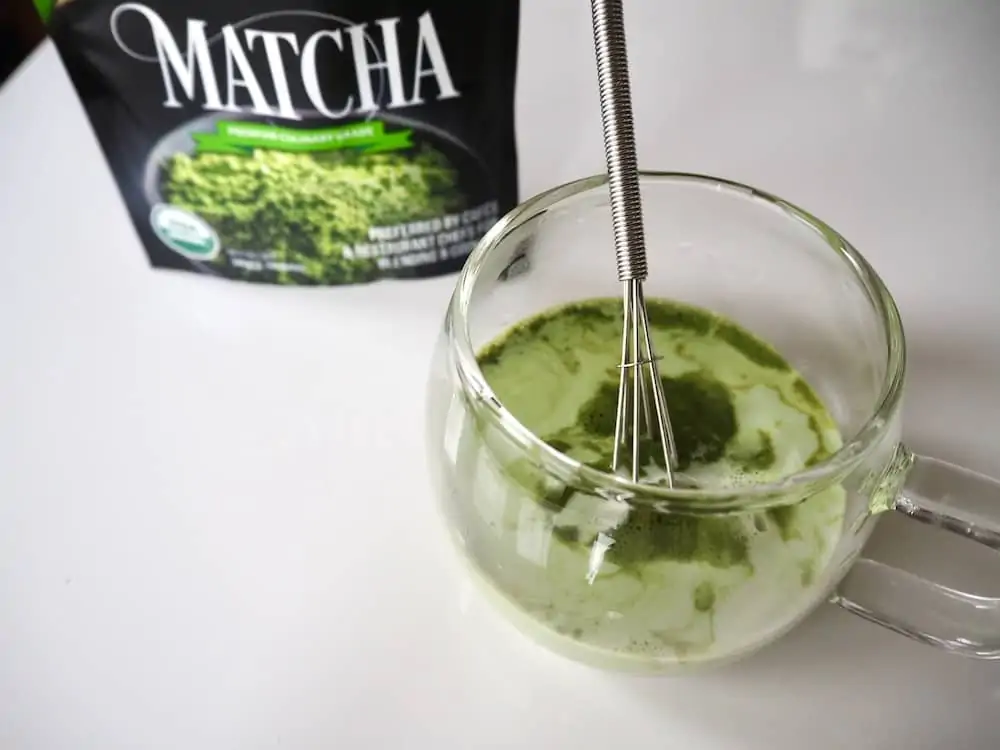
Ingredients You’ll Need
To create your own delicious Matcha Latte at home, you’ll need a few key ingredients. Ensure you have high-quality matcha powder, as it’s the star of the show. Here’s a simple list to get you started:
- 1 teaspoon matcha powder
- rac{1}{4} cup hot water
- 1 cup warmed and frothed milk (dairy or non-dairy)
- Optional: sweetener of choice (e.g., vanilla, date nectar, or white sugar)
Remember, the type of milk you use can greatly affect the taste and texture of your latte. Whether you prefer the creaminess of dairy milk or the nutty undertones of almond or oat milk, choose what best suits your palate.
While the basic ingredients are simple, the quality of matcha powder and the milk’s frothiness are crucial for a perfect Matcha Latte.
Step-by-Step Instructions to Craft the Perfect Cup
Crafting the perfect matcha latte at home is an art that combines simplicity with personalization. Here’s how to get started:
- Begin by sifting 1 teaspoon of matcha powder into a bowl to remove any clumps, ensuring a smooth texture in your latte.
- Add a small amount of hot water—just under boiling—and whisk vigorously in a ‘W’ motion until frothy. This creates the matcha shot, the base of your latte.
- In a separate container, heat your preferred milk (3/4 cup oat milk is a popular choice) until it’s steamed but not boiling. For a frothy finish, use a milk frother or whisk until you achieve the desired level of foam.
- Combine the matcha shot with the sweetener of your choice, stirring until dissolved. Popular options include white sugar or a natural sweetener like agave syrup.
- Pour the frothy milk into the matcha mixture, holding back the foam with a spoon to top off the drink.
- Gently sprinkle a bit of matcha powder on top for a decorative touch and an extra pop of flavor.
Remember, the key to a perfect matcha latte lies in the quality of the matcha powder and the balance of sweetness and milk. Feel free to adjust the proportions to suit your taste.
Expert Tips for a Frothy and Delicious Finish
Achieving the perfect froth in a matcha latte is both an art and a science. Heat your milk to just below boiling to ensure maximum froth without scalding. Use a thermometer to check that the milk reaches around 150-155 degrees Fahrenheit, which is the ideal temperature for frothy goodness.
When pouring the milk, do so gently and with precision to maintain the delicate froth. If you’re using a handheld frother, work it at an angle and move it up and down to introduce as much air as possible without spilling.
Remember, the key to a luxurious matcha latte lies in the texture of the froth. It should be creamy, not bubbly, and hold its shape well when poured.
Lastly, stir your matcha gently but thoroughly before adding the milk. This ensures that the matcha is fully dissolved and evenly distributed, giving you a smooth and consistent flavor in every sip.
Customizing Your Matcha Latte Experience
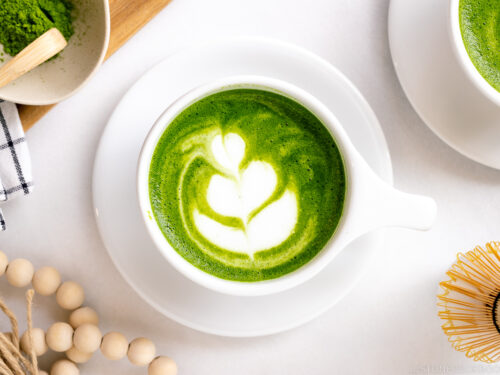
Alternative Sweeteners for Personalized Taste
When crafting your matcha latte at home, the choice of sweetener can greatly influence the flavor profile and health benefits of your beverage. Exploring alternative sweeteners can personalize your latte to your taste preferences and dietary needs.
- Coconut Sugar: A natural sweetener that imparts a mild, sweet flavor with a hint of coconut. It’s considered a healthier alternative to refined sugar.
- Monk Fruit Sweetener: A zero-calorie sweetener that is keto diet friendly and vegan. It’s a great option for those looking to reduce sugar intake without sacrificing sweetness.
- Stevia: A plant-based sweetener that is much sweeter than sugar, so a little goes a long way. It’s calorie-free and suitable for diabetics.
While traditional sugar has its place, these natural and artificial sweeteners offer a range of flavors and health benefits that can enhance your matcha latte experience.
Remember, the key to a perfect matcha latte is balancing the sweetness to complement, not overpower, the unique taste of matcha. Experiment with different sweeteners to find your ideal match.
Dairy and Non-Dairy Milk Options
Choosing the right milk for your matcha latte can significantly affect its taste and texture. Dairy milk options range from whole milk to fat-free, each imparting a unique creaminess and subtle flavor variations. Whole milk will give your latte a rich and velvety texture, while skim milk offers a lighter feel.
For those preferring a plant-based alternative, there are several non-dairy milks to consider:
- Almond milk provides a nutty flavor and is relatively low in calories.
- Oat milk is known for its creamy consistency, making it a favorite for lattes.
- Coconut milk adds a tropical twist with its distinct flavor.
- Soy milk is a protein-rich option that froths well for a smooth finish.
Remember, the choice of milk not only influences the taste but also the nutritional profile of your matcha latte. Opt for unsweetened varieties to control the sweetness level and consider any dietary restrictions or preferences you may have.
Creative Add-Ins and Flavor Variations
Exploring the realm of matcha latte add-ins opens up a world of flavor possibilities. Boldly customize your matcha latte to suit your personal taste preferences with a variety of sweeteners, spices, and powders. From the classic sweetness of honey to the rich decadence of chocolate, the options are endless.
Experimenting with different add-ins not only enhances the flavor but also allows you to tailor the nutritional profile of your latte. Consider incorporating fruit or veg powders for an antioxidant boost, or a dash of cinnamon for a warming spice note.
Here’s a list of popular add-ins to get you started:
- Sweeteners like honey, maple syrup, or stevia
- Chocolate shavings or cocoa powder for a chocolatey twist
- Vanilla extract for a hint of sweetness and aroma
- Coconut flakes or oil to add a tropical dimension
- A pinch of spices such as cinnamon, nutmeg, or cardamom
Remember, the key to a delightful matcha latte lies in the balance of flavors. Start with small quantities of add-ins and adjust according to your taste.
Advanced Matcha Latte Techniques
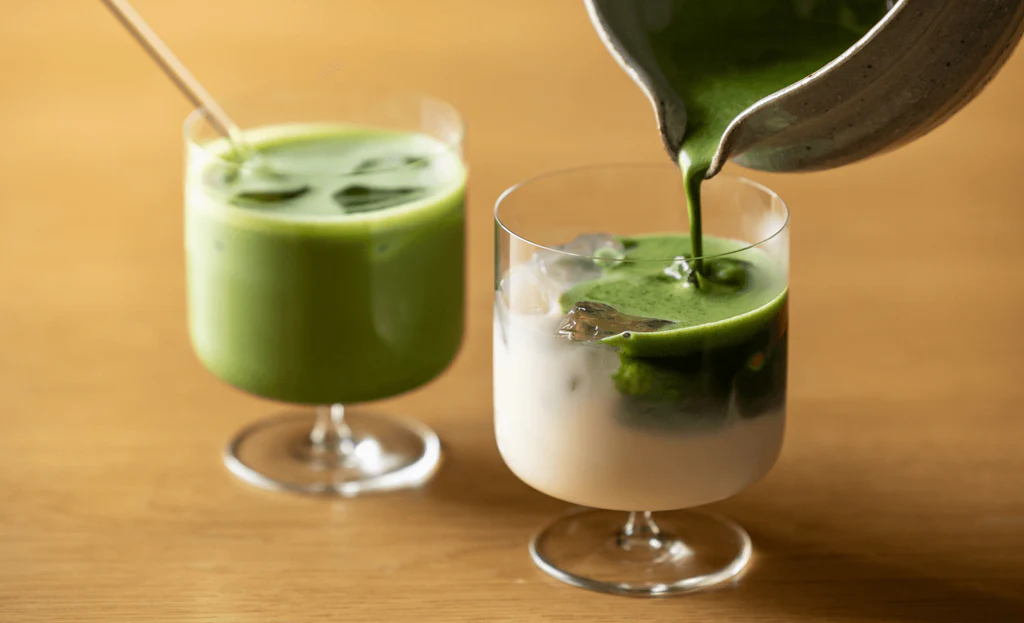
Mastering the Art of the Dirty Iced Matcha Latte
The Dirty Iced Matcha Latte combines the best of both worlds: the earthy tones of matcha and the boldness of espresso. This fusion creates a unique beverage that’s both refreshing and invigorating. To craft this drink, start by preparing an espresso shot and a matcha shot, sweetened with maple syrup. Both should be chilled separately to maintain their distinct flavors.
Once chilled, fill a glass with ice cubes and pour in the espresso, followed by the matcha mixture. The key to a perfect Dirty Iced Matcha Latte lies in the layering. The espresso should form a dark base, with the vibrant green matcha floating on top, creating a visually stunning effect.
For those who prefer a simpler approach, consider the Simple Cold Brew Latte. It’s a pared-back version that still delivers a caffeine kick without the extra steps involved in preparing matcha.
Experiment with variations like the Vanilla Dirty Matcha Latte or the cozy Maple Matcha Latte. Each variation offers a new twist on the classic, allowing you to personalize your latte experience. And if you’re without a bamboo whisk, don’t worry—an electric milk frother works just as well for creating that smooth, frothy texture.
Using a Bamboo Whisk vs. Electric Frother
When it comes to preparing a matcha latte, the tools you use can make a significant difference in the texture and quality of your drink. A bamboo whisk, known as a chasen, is the traditional tool for mixing matcha powder and water into a smooth, frothy blend. Its fine bristles help to aerate the mixture, creating the signature froth of a well-made matcha.
On the other hand, an electric frother offers modern convenience and ease of use. With the push of a button, you can achieve a consistent and creamy froth. Some frothers, like the Jade Leaf Matcha Electric Matcha Whisk + Milk Frother, are specifically designed for matcha, ensuring the perfect blend every time.
While purists may prefer the ritual and results of a bamboo whisk, the electric frother is a practical choice for those seeking a quick and effortless preparation.
Here’s a quick comparison to help you decide which tool might be right for you:
- Bamboo Whisk (Chasen): Traditional, manual, requires technique and practice.
- Electric Frother: Fast, convenient, requires minimal effort.
Cold Brew Matcha: A Refreshing Twist
Cold brew matcha offers a refreshing twist to the traditional matcha latte, perfect for those warm days or when you’re looking for a chilled beverage with a caffeine kick. Unlike the classic preparation that requires hot water, cold brew matcha is made by shaking or stirring matcha powder with cold water, resulting in a smooth and cool drink.
To create your own cold brew matcha latte at home, start with high-quality matcha powder to ensure the best flavor. Here’s a simple guide:
- Sift 1 teaspoon of matcha powder into a glass.
- Add 2 ounces of cold water.
- Shake or stir until the matcha is fully dissolved.
- Sweeten with your preferred liquid sweetener, such as simple syrup, to taste.
- Fill the glass with several ice cubes and pour in 3/4 cup of your favorite milk.
- Top with 1/8 cup of cold brew concentrate or a shot of espresso for an extra boost.
Remember, the key to a perfect cold brew matcha latte is to stir before drinking to evenly distribute the flavors. Enjoy the layered visual effect, but mix well for the full taste experience.
Preserving Your Matcha Latte
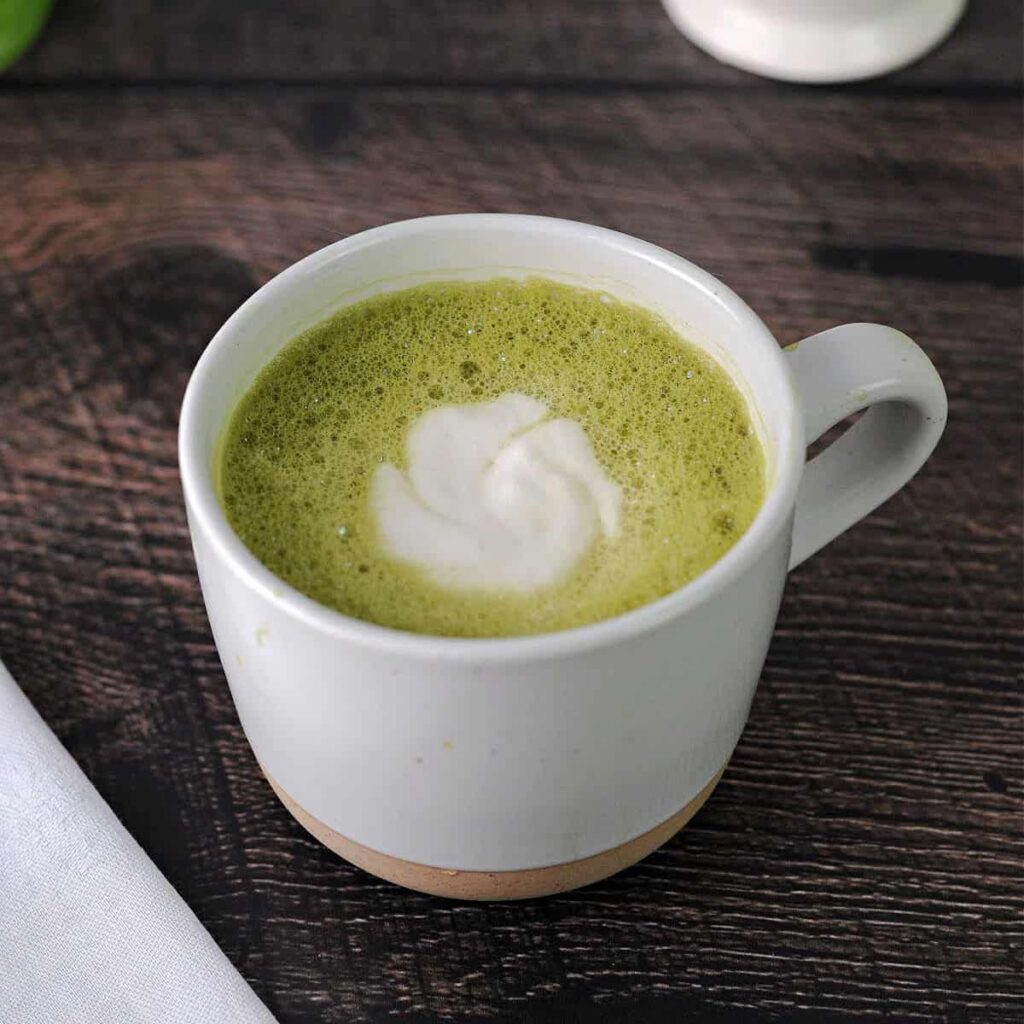
Best Practices for Storing Matcha Powder and Prepared Lattes
Proper storage of matcha powder is crucial for maintaining its freshness and flavor. Keep your matcha powder in an airtight container away from light, heat, and moisture to prevent degradation. The refrigerator is an ideal place for long-term storage, especially after opening the package.
For prepared matcha lattes, consume them fresh for the best taste. If you must store them, here’s how:
- Remove any ice to avoid dilution.
- Store in the refrigerator for up to 24 hours.
- Before serving again, give it a quick stir and add fresh ice if desired.
Remember, matcha has a delicate flavor profile that can be easily compromised by improper storage. Always strive for the best methods to preserve its unique taste.
Making Matcha Lattes in Bulk: Do’s and Don’ts
When preparing matcha lattes in bulk, it’s essential to maintain the quality and flavor that matcha enthusiasts love. Ensure you use high-quality matcha powder to avoid bitterness and achieve the vibrant green hue that is characteristic of a great matcha latte.
To cater to different preferences, consider offering a variety of sweeteners and milks. This allows guests to customize their lattes to their liking, enhancing the overall experience.
Here are some key points to remember:
- Use matcha powder, not green tea powder, to avoid a more bitter taste.
- For a cold brew matcha, shake the sifted matcha with cold water before adding to your latte.
- Offer liquid sweeteners like simple syrup for those who prefer a sweeter latte.
- Provide a range of milk options, including plant-based alternatives like oat, soy, and coconut milk, to cater to all dietary preferences.
Remember, the simplicity of the recipe is its charm. With just a few ingredients, you can create a delightful matcha latte that rivals those from popular cafes. Keep the process straightforward and the options customizable for the best bulk matcha latte experience.
How to Enjoy a Matcha Latte at Any Time of Day
A matcha latte can be a versatile beverage, perfect for any time of day. Morning enthusiasts may relish the gentle caffeine lift that matcha provides, making it an ideal start to the day. In the afternoon, a matcha latte can serve as a refreshing pick-me-up, without the jitters often associated with coffee.
Evening matcha lattes can be just as delightful. Opt for a decaffeinated version if caffeine sensitivity is a concern, allowing for a soothing ritual before bedtime.
For those who enjoy customization, here are some variations to consider:
- Vanilla Dirty Matcha Latte: A splash of vanilla for a classic flavor.
- Maple Matcha Latte: Use maple syrup for a sweet, autumnal twist.
- Simple Cold Brew Latte: Keep it basic for a straightforward, no-fuss latte.
- Dalgona Matcha Latte: Add whipped instant coffee for a frothy top layer.
Remember, if you have leftover matcha latte, it’s best enjoyed fresh. However, you can store it in the refrigerator for up to 24 hours. Before indulging again, remove any ice, give it a stir, and perhaps add fresh ice to revive its coolness.
Conclusion
Crafting a matcha latte at home is not just a delightful way to enjoy a favorite cafe-style beverage, but it’s also a simple and customizable process that allows you to tailor the drink to your taste preferences. Whether you prefer a classic hot matcha latte, an iced version, or even a creative twist like a dirty matcha latte with a hint of coffee, the possibilities are endless. With the right quality matcha powder and a few basic ingredients, you can whip up a barista-level latte in the comfort of your own kitchen. So, say goodbye to long lines and expensive coffee shop visits, and embrace the art of making your perfect matcha latte at home.
Frequently Asked Questions
What is Matcha and how does it differ from regular green tea?
Matcha is a finely ground powder made from specially grown and processed green tea leaves. Unlike regular green tea, where the leaves are infused in water and then removed, matcha involves consuming the whole leaf, resulting in a more potent flavor and a higher concentration of nutrients.
How do I select the best Matcha powder for my latte?
Look for vibrant green matcha powder, which indicates freshness and quality. It should be from Japan and have a fine texture. Avoid powders that look dull or yellowish, as they may be stale or of lower quality.
Can I make a Matcha latte without a bamboo whisk?
Yes, you can use an electric milk frother instead of a traditional bamboo whisk. While the bamboo whisk is ideal for achieving a smooth consistency, an electric frother can also produce a satisfactory froth for your latte.
What are some creative ways to sweeten my Matcha latte?
Beyond traditional sugar, you can use honey, maple syrup, or agave nectar for natural sweetness. For a fruity twist, blend in pitted Medjool dates, or try adding a splash of vanilla syrup for a classic flavor.
What milk alternatives can I use for a dairy-free Matcha latte?
You can use any non-dairy milk such as almond, soy, oat, or coconut milk. Each will add its own unique flavor and creaminess to the latte.
Can I prepare a Matcha latte in advance and store it?
Yes, you can prepare Matcha lattes in bulk and store them in the refrigerator. However, for the best taste and texture, it’s recommended to enjoy them fresh. If you do store them, give them a good shake or stir before drinking to redistribute any settled matcha particles.




